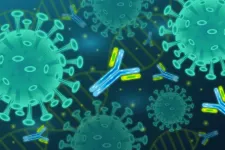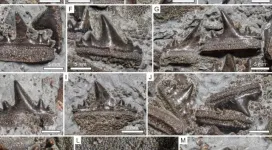(Press-News.org) The COVID-19 pandemic has now claimed over 2 million deaths worldwide, and this number is only increasing. In response, health agencies have rolled out tests to diagnose and understand the disease. Besides the now widely known PCR test, there is interest in serological (blood) tests that detect "antibodies" against SARS-CoV-2, the virus that causes COVID-19. These blood tests have considerable applications, from identifying blood donors with high levels of anti-SARS-CoV-2 antibodies, whose blood can be used for convalescent plasma therapy, to measuring vaccine effectiveness.
So, what are antibodies? These are proteins produced by the body's immune system to combat foreign proteins, such as the SARS-CoV-2 virus. Antibodies function by binding to a specific part of the virus that the immune system recognizes, called "antigens." SARS-CoV-2 is composed of four major proteins, with two being highly immunogenic (capable of producing an immune response). These immunogenic proteins are called spike (S) and nucleocapsid (N) proteins. Presence of antibodies specific to the S protein means there is a higher amount of virus-neutralizing activity while antibodies specific to N protein indicate the presence of previous SARS-CoV-2 infection.
Despite this general awareness, we actually have only a vague understanding of how different antibodies (or antibody "isotypes") interact with the various antigens produced by SARS-CoV-2. Hence, a team of scientists led by Senior Assistant Professor Hidetsugu Fujigaki and Professor Yohei Doi from Fujita Health University, in collaboration with National Institute of Infectious Diseases, Japan, FUJIFILM Wako Pure Chemical Corporation, and FUJIFILM Corporation undertook the first detailed investigation of these interactions. "Our goal was to quantify the neutralizing activity of these different antibodies against SARS-CoV-2," Dr. Fujigaki explains, "We looked at antibodies specific to different parts of the S protein and the N protein to determine which of them was the best predictor of stopping the virus."
They did this through an analysis of blood samples from 41 COVID-19 patients at the Fujita Health University Hospital. The team developed assays using three common antibodies (IgG, IgM, and IgA), each of them split into isotypes that bind specifically to five antigens (three parts of the S protein, including the receptor binding domain [RBD], the full S protein, and the full N protein).
The results of their experiments showed that all antibody isotypes that bind to the S protein (full and parts) were highly specific, but antibody isotypes binding to the N protein were less so. With minor variations, all antibodies are detectable in patients at approximately 2 weeks after symptoms appear, and detection sensitivity was higher than 90% (except in the case of IgM binding to N protein). Importantly, the researchers showed that IgG specific to the RBD of S protein had the highest correlation with virus neutralizing activity and disease severity. In other words, measuring RBD-specific IgG levels could tell us a lot about the immune response of COVID-19 patients, and could be the foundation for improving COVID-19 blood tests.
"We are also very excited by our findings because of their implications for convalescent serum/plasma therapy, a type of treatment where you transfuse blood from people who recovered from COVID and have high levels of antibodies against SARS-CoV-2," Dr. Fujigaki adds, "Being able to show that the IgG antibody against RBD is highly correlated with neutralizing activity means we can identify appropriate blood donors for this treatment."
The world is hopefully moving into the final stages of the pandemic, and this information could be the tools needed to carve out the final few steps to a safe post-pandemic world.
INFORMATION:
Reference
Title of original paper: Comparative analysis of antigen-specific anti-SARS-CoV-2 antibody isotypes in COVID-19 patients
Journal: Journal of Immunology
DOI: https://doi.org/10.4049/jimmunol.2001369
About Fujita Health University
Fujita Health University is a private university situated in Toyoake, Aichi, Japan. It was founded in 1964 and houses one of the largest teaching university hospitals in Japan in terms of the number of beds. With over 900 faculty members, the university is committed to providing various academic opportunities to students internationally. Fujita Health University has been ranked eighth among all universities and second among all private universities in Japan in the 2020 Times Higher Education (THE) World University Rankings. THE University Impact Rankings 2019 visualized university initiatives for sustainable development goals (SDGs). For the "good health and well-being" SDG, Fujita Health University was ranked second among all universities and number one among private universities in Japan. The university will also be the first Japanese university to host the "THE Asia Universities Summit" in June 2021. The university's founding philosophy is "Our creativity for the people (DOKUSOU-ICHIRI)," which reflects the belief that, as with the university's alumni and alumnae, current students also unlock their future by leveraging their creativity.
Website: https://www.fujita-hu.ac.jp/en/index.html
About Senior Assistant Professor Hidetsugu Fujigaki from Fujita Health University
Dr. Hidetsugu Fujigaki is part of the Department of Disease Control and Prevention at the Fujita Health University Graduate School of Health Sciences. He is an author on over 20 publications. His work is centered on assay development for new biomarkers and lead discovery for drug development to advance human health.
About Prof. Yohei Doi from Fujita Health University
Dr. Yohei Doi, M.D., Ph.D., is a Professor at the Departments of Microbiology and Infectious Diseases at Fujita Health University School of Medicine and the Director of the Center for Innovative Antimicrobial Therapy at the University of Pittsburgh. He has authored 226 publications and has served on several journals' editorial boards. He has led a clinical trial of the flu drug "Avigan" (favipiravir) as a potential treatment for COVID-19 at Fujita Health University.
Funding information
This study was supported in part by Grants-in-Aid from the Japan Agency for Medical Research and Development (grant numbers: AMED, JP19fk0108110 and JP19fk0108150). It was also funded by FUJIFILM Wako Pure Chemical Corporation.
This rare fossil find comes from the Kimmeridge Clay Formation in England, a series of sedimentary rocks that was formed in a shallow, tropical-subtropical sea during the Upper Jurassic, about 150 million years ago. The fossil shark skeleton was found more than 20 years ago on the southern coast of England and is now held in the Etches Collection. Additional fossil shark specimens from it will be investigated in the years to come.
Due to their life-long tooth replacement shark teeth are among the most common vertebrate finds encountered in the fossil record. The low preservation potential of their poorly mineralized cartilaginous skeletons, on the ...
A scientist from HSE University has developed an image recognition algorithm that works 40% faster than analogues. It can speed up real-time processing of video-based image recognition systems. The results of the study have been published in the journal Information Sciences.
Convolutional neural networks (CNNs), which include a sequence of convolutional layers, are widely used in computer vision. Each layer in a network has an input and an output. The digital description of the image goes to the input of the first layer and is converted into a different set of numbers at the output. The result goes to the input of ...
Wastewater testing is an effective way to identify new cases of COVID-19 in nursing homes and other congregate living settings, and it may be particularly useful for preventing outbreaks in college dormitories, a new University of Virginia study finds.
The research, a collaboration of UVA's School of Medicine and School of Engineering, was led by UVA Health's Amy Mathers, MD. It offers some of the first clear guidance on the most effective methods to perform testing to detect COVID-19 in wastewater.
The researchers evaluated and compared sampling and analysis techniques by testing them within buildings with known numbers of positive cases. They were then able to determine wastewater testing's strengths and limitations as a tool for monitoring COVID-19 in a building population. ...
SASKATOON - Tepary beans--a high protein legume common to the southwest United States and Mexico--may hold the key to adapting bean crops for the increasingly harsh conditions brought on by a changing climate, according to research led by University of Saskatchewan (USask) and Michigan State University.
In a study just published in Nature Communications, the researchers found that as the mercury rises to 27oC at night--a temperature devastating for current bean crops--specific genes sensitive to heat stress in the tepary bean get activated, protecting the plant. ...
The investigators used machine learning to predict which patients might get worse and not respond positively to being turned onto their front in intensive care units (ICUs) - a technique known as proning that is commonly used in this setting to improve oxygenation of the lungs.
While the AI model was used on a retrospective cohort of patient data collected during the pandemic's first wave, the study demonstrates the ability of AI methods to predict patient outcomes using routine clinical information used by ICU medics.
The researchers say the approach, where each patient's ...
Alexandria, Va., USA -- Carbon dioxide (CO2) is a byproduct of human metabolism and exists in high levels in exhaled air, and is therefore often used as a proxy for indoor air quality. The study "Ventilation Assessment by Carbon Dioxide Levels in Dental Treatment Rooms," published in the Journal of Dental Research (JDR), evaluated CO2 levels in dental operatories and determined the accuracy of using CO2 levels to assess ventilation rate in dental clinics.
Researchers at the University of Rochester, Eastman Institute for Oral Health, N.Y., USA, conducted CO2 concentration and ventilation rate assessments in 10 closed dental treatment rooms with varying ...
Roads can be barriers to wildlife of all sorts, and scientists have studied road impacts on animals ranging from Florida panthers and grizzly bears to box turtles, mice, rattlesnakes and salamanders.
But much less is known about the impact of roads on pollinating insects such as bees and to what extent these structures disrupt insect pollination, which is essential to reproduction in many plant species.
In a paper published online May 10 in the Journal of Applied Ecology, University of Michigan researchers describe how they used fluorescent pigment as an analog for pollen. They applied the luminous pigment to ...
(Boston)--Chronic Obstructive Pulmonary Disease (COPD) is a disease caused by cigarette smoking that reduces lung function and causes difficulty breathing. It is the third leading cause of death worldwide. Current treatments for COPD only affect symptoms, not progression. Identifying who is going to get COPD before they get it is key to figuring out how to intercept the disease at an early stage.
Researchers from Boston University School of Medicine (BUSM) have identified a panel of genes that are active in smokers and ex-smokers who experience faster loss of lung function over time. They believe these genes could be useful to predict which people are most at risk for smoking-related ...
(Boston)--Knee osteoarthritis (OA) is a global health problem. Almost half the adults over the age of 75 have some form of knee OA--one of the leading causes of disability worldwide. Because there is no cure for knee OA, current treatment relies on accurately identifying and staging the disease.
Using an Artificial Intelligence-based approach known as deep learning, researchers from Boston University School of Medicine (BUSM) have now identified a new measure to determine the severity of knee osteoarthritis--named "subchondral bone length" (SBL).
There are only a handful of proven imaging markers of knee OA. Currently, medical imaging tools such as Magnetic ...
DALLAS - April 30, 2021 - UT Southwestern scientists successfully employed a new type of gene therapy to treat mice with Duchenne muscular dystrophy (DMD), uniquely utilizing CRISPR-Cas9-based tools to restore a large section of the dystrophin protein that is missing in many DMD patients. The approach, described online today in the journal Science Advances, could lead to a treatment for DMD and inform the treatment of other inherited diseases.
"Thousands of different mutations causing Duchenne have been identified, but they tend to cluster into certain parts of the dystrophin gene," says study leader END ...




